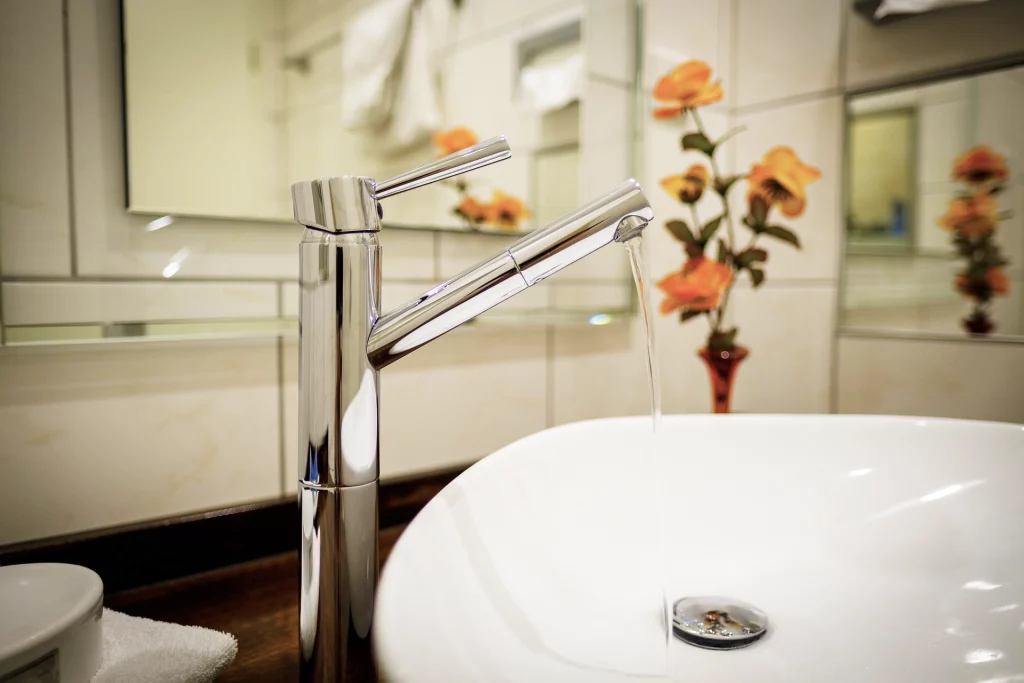
Chrome is common for very shiny bathroom fixtures or vintage cars. Chrome is made by simply coating a base metal with the element chromium. Commercial chrome plating was employed to make ornamental car trim, gleaming residential lighting and plumbing fittings, and harden industrial instruments.
Items plated with chrome are durable, corrosion-resistant, and rather beautiful. The thickness of the coating varies and can be applied to various materials such as steel, aluminium, and even plastic.
Depending on where the chrome can be found, the need for cleaning may vary. While bathroom fixtures should be cleaned at least once a week in order to keep hard water stains at bay, decorative items usually only need dusting. If you wipe your chrome faucets daily, you will be able to make mineral deposits easier to remove and keep your chrome shiny and beautiful. Fortunately for you, chrome is very easy to clean with just a few common household ingredients you probably already have at home.
Keep reading to find out the best ways to easily restore your chrome’s shine.
Cleaning chrome using dishwashing liquid
- Prepare the cleaning solution – Add a few drops or a teaspoon of dishwashing liquid into a sink full of lukewarm water. Mix the solution very well.
- Wipe the chrome – Dip a soft cloth or a non-abrasive sponge into the solution. Wring it until it is just damp and wipe down the whole surface of your chrome fixture/item. Make sure you rinse your cloth/sponge frequently so that dirt and grime are not smeared back on the faucet. Use an old soft toothbrush dipped in soapy water to clean tight places and crevices. Sprinkle a bit of dry baking soda on the sponge or toothbrush to remove stuck-on dirt like dried toothpaste or food. Baking soda’s mild abrasive action will help loosen the mess.
- Rinse the chrome faucet – Drain the sink once you are done wiping all faucets or the solution is visibly dirty. Make a new solution if you need to wipe down more chrome, if not – fill the sink with plain water. Dip a cloth or a soft sponge there, wring it until it is not dripping, and wipe down all fixtures again. Make sure you get rid of all soapy residue – it may attract more soil in the future.
- Buff dry – Use a dry lint-free microfiber cloth to dry the surface. Ensure you thoroughly do that and do not allow water to evaporate. This will prevent water spots from occurring.
Cleaning chrome using vinegar
- Make a vinegar solution – Vinegar is a powerful household ingredient that is great for removing hard water mineral deposits from chrome surfaces. If you have not cleaned your faucets or fixtures in a while, the heavy build-up will most likely be hard to get rid of. In that case, soapy water may not be enough and you can try using a 1:1 solution of water and vinegar instead. To achieve the best results, use distilled water that contains no minerals.
- Wipe down the chrome – Dip a cloth or a sponge in the solution, wring it out, and wipe down all chrome surfaces. If the deposit is too stubborn, use pure vinegar instead. Rub gently and move slowly so the vinegar has time to dissolve the mineral deposit.
- Rinse – Rinse the cloth or sponge in plain water and wipe down the surface again. Make sure you use distilled water to prevent the mineral deposit from reappearing. Grab a dry microfiber cloth and buff dry the whole surface. Don’t skip the drying step since that may cause spotting.
Cleaning rusty spots from chrome
Use aluminium foil – If rust forms on chrome, aluminium foil can be used to restore the lustre. Make a loose ball out of a square of aluminium foil. Dip the foil in a warm, soapy water solution and gently rub it in small circles over the rusted chrome. While cleaning, make sure that the foil and chrome are damp. If the foil begins to tarnish or rip, discard it and replace it with a new square until the chrome is clean. Rinse the chrome well with warm water and buff dry with a soft cloth after cleaning.
How to protect chrome and make cleaning easier
Since chrome was formerly a popular feature on vehicles, the industry discovered that waxing chrome protects the shine and makes subsequent cleanings easier. Water and filth bead up and roll away faster as a result of the wax. Use a carnauba oil-containing automobile wax to keep the shine on your chrome surface.
Things to avoid when cleaning chrome:
- Never use harsh abrasive sponges or scouring pads on chrome.
- Never use a stiff-bristled brush on chrome faucets.
- Avoid using scouring powders.
- If you are using any commercial products, read the label on the packaging and make sure it is safe to use on chrome surfaces.
